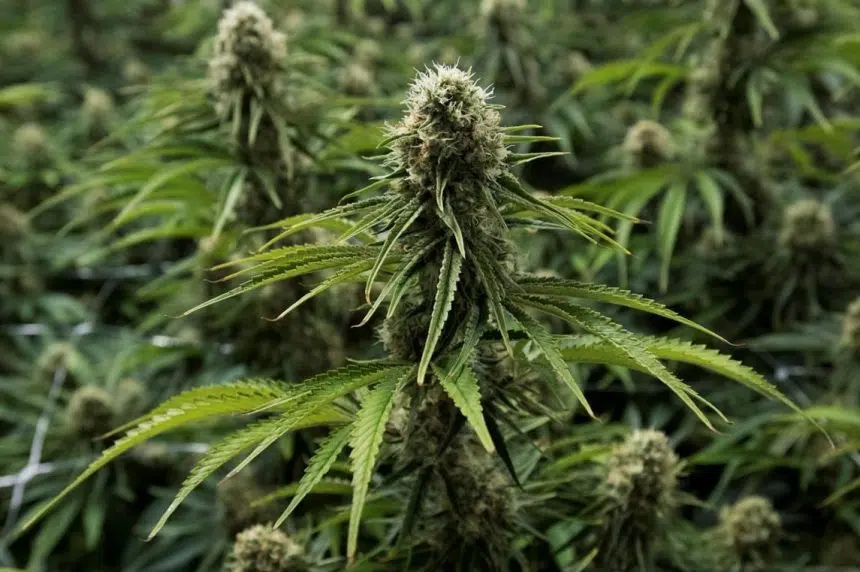Last week, a police checkstop in Chamberlain caught a number of people driving impaired, but not by alcohol.
The RCMP suspended the licences of 40 drivers due to cannabis impairment.
Brian Ferguson, a corporal with the RCMP Traffic Services Unit, said officers conducting the checkstop had to have a suspicion of cannabis use. The suspicion can be based on smell, sight or a driver informing the officer they consumed a cannabis product.
That’s different to alcohol-impaired screening, where officers can simply ask for it as part of a legal stop.
Ferguson said the tricky thing with cannabis is all the different forms and everyone reacting differently. It cannot be measured the same way alcohol can.
“We can’t really give a time; it all depends. That’s the best answer I can give you is it depends,” he said.
The oral swab tests have a 25-nanogram threshold, which should only detect recent consumption.
“From a legal perspective, that’s what we need to show: That someone was operating a vehicle and has a drug in their body now … It wasn’t in there yesterday, it’s there now,” he said.
That means cannabis use from the day before shouldn’t be detected.
If the threshold number was any lower, it might detect THC use from a few days prior.
“The threshold is high enough that if you’re outside the hours of consumption, more than likely you’re not going to test positive,” explained Ferguson.
But he wants to emphasize this isn’t always the case.
“I never say never and I never say always,” he said.
A lot of factors come into play with cannabis, like how it is used, the quantity, the percentage and the individual’s own tolerance.
There are two different oral devices for testing.
The Dräger DrugTest 5000 is larger and tests for both THC and cocaine. The Abbott SoToxa is more portable and only tests for THC.
There is a cotton swap on the tester that is put into the user’s mouth. A measuring device is on the other end. Once a sufficient amount has been collected, the ball at the bottom of the measuring device turns blue.
Within five to 10 minutes, results will come back either positive or negative.
“Our best advice is if you’re going to use a cannabis product or use THC and you’re planning to drive, you need to wait a sufficient amount of time before you get behind the wheel. That can mean many hours,” said Ferguson.
He was skeptical of the tests at first. He knew his officers would be faced with questions like, “How accurate is it?” He said they’ve subjected the tests to a lot of different variables to see how results came back.
He’s never seen a false positive.
Even when he thought a driver would test positive, after smelling the product on them and the user confirming they smoked eight to 10 hours prior, the test came back negative.
“If it always tested positive, I’d be suspicious,” said Ferguson.
Ferguson encourages everyone to know their own limits and drive responsibly.
“If you are feeling impaired by cannabis, do not get behind the wheel at all, under any circumstances,” he said.
In Saskatchewan, experienced drivers aren’t legally permitted to drive with a blood-alcohol content (BAC) of .04 or higher, and new drivers aren’t allowed any allowed any alcohol in their system at all. For cannabis, there is a zero-tolerance policy.
Anyone who tests positive on the oral swab will lose their licence for a few days and have their vehicle impounded.











